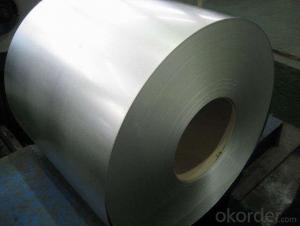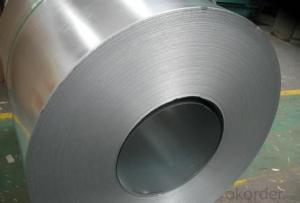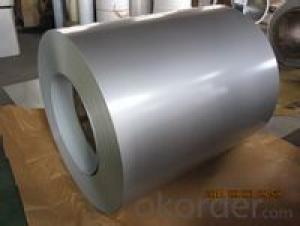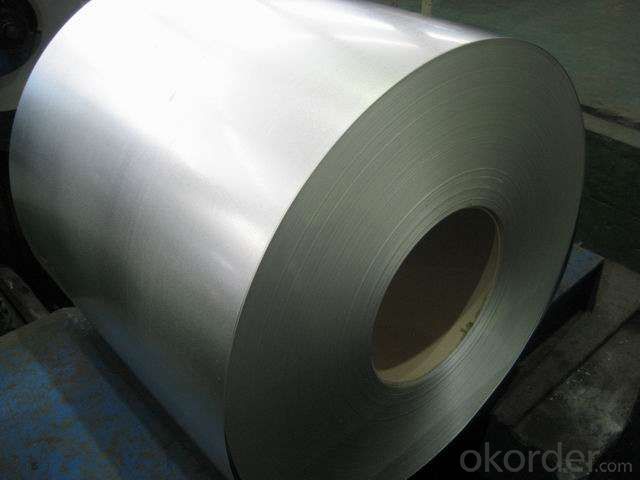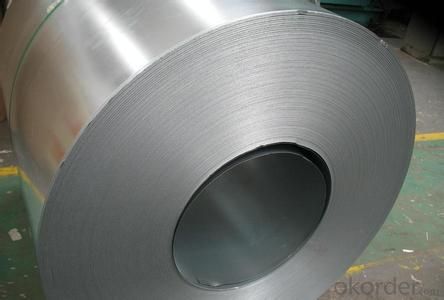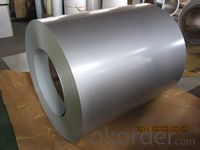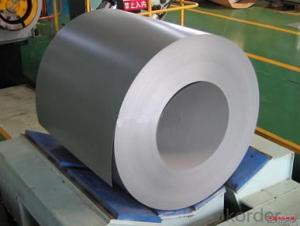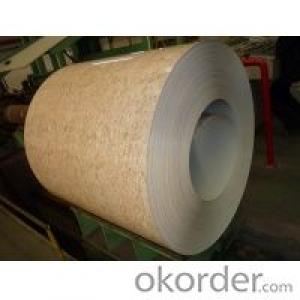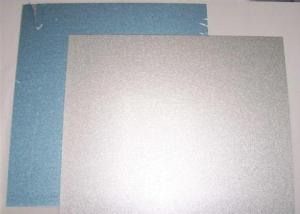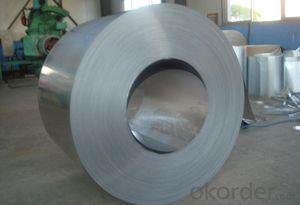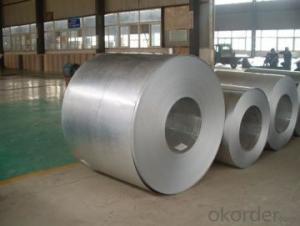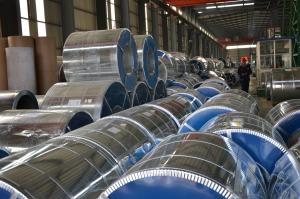Gavalume steel coil and sheet
- Loading Port:
- China Main Port
- Payment Terms:
- TT OR LC
- Min Order Qty:
- -
- Supply Capability:
- -
OKorder Service Pledge
OKorder Financial Service
You Might Also Like
Packaging & Delivery
| Packaging Detail: | seaworthy packing |
| Delivery Detail: | 10-30 days |
Specifications
galvalume steel coil AZ
55% Al, 43,5% Zn, 1,5% Si
1.Grade: G3312, SGLCC
2.Thickness: 0.20mm to 2.00mm
4.Delivery: 30 days
galvalume steel coil AZ
Thickness | 0.2mm-2.0mm |
Width | 914mm-1250mm |
Single weight | 1.0-6.0MT |
Coating | AZ 60-275g/m2 |
Steel grades | SGLCC SGLCD SGLCDD SGLC400-SGLC570;SZACC, SZACH, SZAC340R |
Standard | ASTM A792, JIS G3321 JIS G3317 |
Packing | Wrapped by plastic film and waterproof paper, and then fastened on wooden pallet.Or as you request. |
Usage | Used in building material, roof, profile,pipe making, furniture making, etc. |
Minimum quantity | 20MT |
Port of loading | Shang or Ningbo,China |
Delivery time | 5-20 days after we sign the contract. |
Payment terms | 30%T/T down payment,balance before shipment or irrevocable L/C at sight |
Supply ability | 20,000 MT per month |
- Q: What are the different types of steel coil coatings available?
- There are several different types of steel coil coatings available, including polyester, polyurethane, siliconized polyester, fluorocarbon, and plastisol coatings. Each type of coating offers specific properties and benefits, such as durability, corrosion resistance, weatherability, and aesthetics, making them suitable for various applications in industries such as construction, automotive, and appliances.
- Q: How are steel coils used in the manufacturing of HVAC ductwork?
- Steel coils are used in the manufacturing of HVAC ductwork as they provide strength and durability to the ducts. These coils are shaped and formed into the desired ductwork design, providing a rigid structure that can withstand the pressure and movement of air. The steel coils also ensure that the ductwork maintains its shape over time, preventing any deformation or collapse.
- Q: How are steel coils used in the production of railway tracks?
- Railway tracks rely heavily on steel coils, which are indispensable in their production. These coils, typically made from top-notch steel, are utilized to create the rails that constitute the bedrock of the tracks. The process commences with the unwinding of the steel coils, which are then fed into a sequence of machines that mold and fashion them into the desired rail profile. Initially, the steel coils are passed through a rolling mill, where they undergo gradual flattening and shaping, thereby transforming into elongated steel strips. This technique, known as hot rolling, involves heating the steel to high temperatures to enhance its pliability. The rolling mill exerts substantial pressure on the steel, progressively molding it into the desired rail shape. Once the steel coils have been rolled into the requisite form, they are subsequently severed into individual rail lengths. The length of these rails may vary depending on the specifications of the railway track being produced. The rail lengths then undergo further processing to eliminate any flaws and straighten them out. Following this initial shaping and processing, the rails undergo a series of supplementary treatments. These treatments may entail heat treatment to bolster their strength and durability, as well as various surface treatments to prevent corrosion and wear. Once the rails have undergone all the necessary treatments, they are ready for installation on the railway track. They are laid out meticulously in a predetermined pattern, with each rail securely fastened to the sleepers or ties. The continuous length of steel provided by the coils ensures a seamless and uniform track, enabling trains to travel smoothly and safely. In conclusion, steel coils are crucial components in the production of railway tracks. They are utilized to manufacture the rails that serve as the foundation of the tracks, guaranteeing durability, strength, and a smooth surface for trains to traverse. The use of high-quality steel coils in this process is essential to ensure the safety and efficiency of railway transportation.
- Q: Why?Which one should i get? I am just starting to learn Guitar. Which one would be better for me? What is the difference? I already got the acoustic nylon but i might return it... if the steel is better.
- I okorder /
- Q: My string on my acoustic guitar broke. Can I replace all of my strings with phosphor bronze guitar strings if my guitar has steel strings on them?
- Yes you can. In fact, I prefer phosphor bronze strings to standard steel on my acoustic guitar. I think they play better, feel better, and sound better. My favorites are the D'Addario phosphor-bronze medium gauge.
- Q: What are the different types of steel coil cutting machines?
- There are several different types of steel coil cutting machines, including slitting machines, shearing machines, and laser cutting machines. Slitting machines are used to cut the steel coil into narrow strips, while shearing machines cut the coil into smaller, more precise lengths. Laser cutting machines use a high-powered laser beam to cut through the steel coil with extreme accuracy. Each type of machine has its own advantages and is suited for specific cutting requirements.
- Q: How do steel coils contribute to the manufacturing of steel furniture?
- Steel coils are an essential component in the manufacturing of steel furniture as they serve as the raw material for creating various steel components. These coils are used to form and shape the different parts of the furniture, such as frames, legs, and supports. The coils are unwound and cut into the required lengths, then passed through various machines like presses and rollers to bend, shape, and join them together. This process allows for the customization and fabrication of the steel furniture, ensuring strength, durability, and the ability to withstand heavy loads. Overall, steel coils play a crucial role in shaping and forming the structural elements of steel furniture, providing the necessary strength and stability to the finished product.
- Q: and what are the four main elements in STAINLESS steel? x
- Very high carbon steel (0.96 to 2.11%) is hard and not very ductile (difficult to mold or shape). It is also difficult to weld, but has the lowest melting point. As the carbon content is reduced, the steel becomes softer, more ductile and melts at a higher temperature. Stainless steel is an alloy of Iron, Carbon, Chromium. The fourth element would depend upon the grade of steel, but Nickel is probably the most common.
- Q: What are the common methods of handling steel coils during production?
- The common methods of handling steel coils during production include using overhead cranes, forklifts, and coil tongs. These tools are utilized to lift, transport, and position the coils within the production facility. Additionally, coil cars and transfer systems are often used to move the coils between different stages of the production process. It is crucial to handle the steel coils with care to prevent damage and ensure efficiency in the production line.
- Q: What are the key properties of steel coils?
- The key properties of steel coils include their strength, durability, and flexibility. Steel coils are known for their high tensile strength, making them suitable for various applications that require load-bearing capacity. They also exhibit excellent durability, resisting wear, corrosion, and damage over time. Additionally, steel coils are highly flexible, allowing for easy shaping and forming into different structures or products.
Send your message to us
Gavalume steel coil and sheet
- Loading Port:
- China Main Port
- Payment Terms:
- TT OR LC
- Min Order Qty:
- -
- Supply Capability:
- -
OKorder Service Pledge
OKorder Financial Service
Similar products
Hot products
Hot Searches
Related keywords
